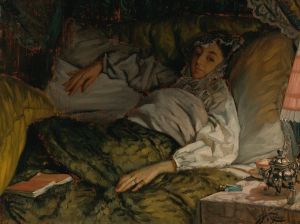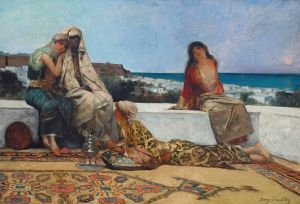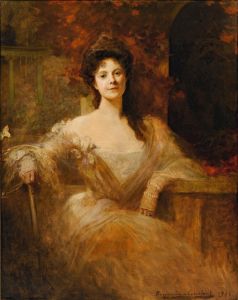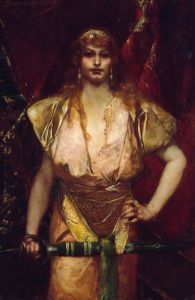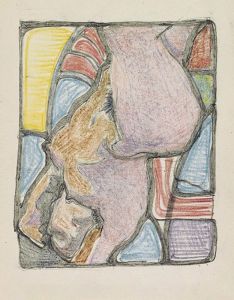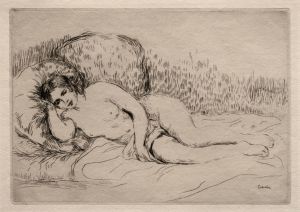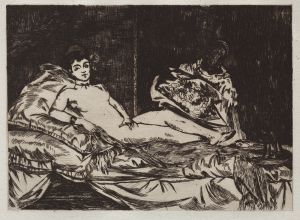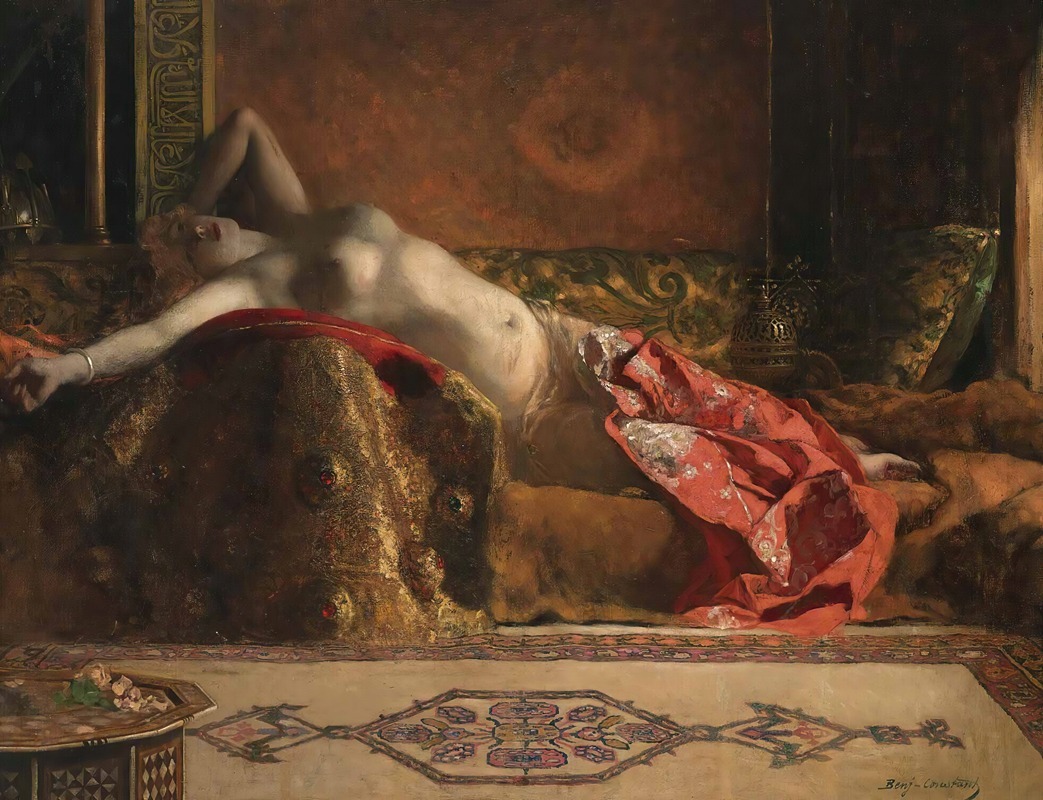
Reclining Odalisque
A hand-painted replica of Jean-Joseph-Benjamin Constant’s masterpiece Reclining Odalisque, meticulously crafted by professional artists to capture the true essence of the original. Each piece is created with museum-quality canvas and rare mineral pigments, carefully painted by experienced artists with delicate brushstrokes and rich, layered colors to perfectly recreate the texture of the original artwork. Unlike machine-printed reproductions, this hand-painted version brings the painting to life, infused with the artist’s emotions and skill in every stroke. Whether for personal collection or home decoration, it instantly elevates the artistic atmosphere of any space.
"Reclining Odalisque" is a painting by the French artist Jean-Joseph-Benjamin Constant, who was born in 1845 and died in 1902. Constant was a prominent painter during the late 19th century, known for his Orientalist works that depicted scenes from the Middle East and North Africa. His fascination with the exotic and the opulent is evident in many of his paintings, and "Reclining Odalisque" is a prime example of this interest.
The painting portrays an odalisque, a female slave or concubine in a harem, reclining in a luxurious setting. This subject matter was a popular theme among Orientalist artists, who were inspired by the romanticized and often stereotypical views of Eastern cultures. The odalisque is depicted in a relaxed pose, lying on a richly adorned couch or divan, surrounded by sumptuous fabrics and intricate patterns. The use of vibrant colors and detailed textures highlights the opulence and sensuality of the scene.
Jean-Joseph-Benjamin Constant's "Reclining Odalisque" reflects the broader 19th-century European fascination with the Orient, a term used to describe the cultures of the Middle East, North Africa, and Asia. This fascination was fueled by increased travel, colonial expansion, and the publication of travel literature and art that depicted these regions as exotic and mysterious. Orientalist art often emphasized the exoticism and eroticism of the East, and Constant's work is no exception.
Constant was a student of Alexandre Cabanel at the École des Beaux-Arts in Paris, where he developed his technical skills and artistic style. He traveled extensively in the Middle East and North Africa, drawing inspiration from his experiences and observations. His travels allowed him to gather a wealth of visual material, which he incorporated into his paintings to create detailed and evocative scenes.
"Reclining Odalisque" is characterized by its meticulous attention to detail and the artist's skillful use of light and shadow. The textures of the fabrics, the play of light on the odalisque's skin, and the intricate patterns of the background all contribute to the painting's overall sense of richness and depth. The composition is carefully balanced, with the reclining figure serving as the focal point, drawing the viewer's eye into the scene.
Jean-Joseph-Benjamin Constant's work, including "Reclining Odalisque," was well-received during his lifetime, and he exhibited regularly at the Paris Salon. His paintings were praised for their technical excellence and their ability to transport viewers to distant and exotic locales. Today, his work is recognized as an important part of the Orientalist movement in art history.
In summary, "Reclining Odalisque" by Jean-Joseph-Benjamin Constant is a notable example of 19th-century Orientalist painting. It captures the allure and opulence of the East as imagined by European artists of the time, showcasing Constant's skill in rendering detailed and evocative scenes. The painting remains a testament to the artist's fascination with the exotic and his ability to bring these visions to life on canvas.





